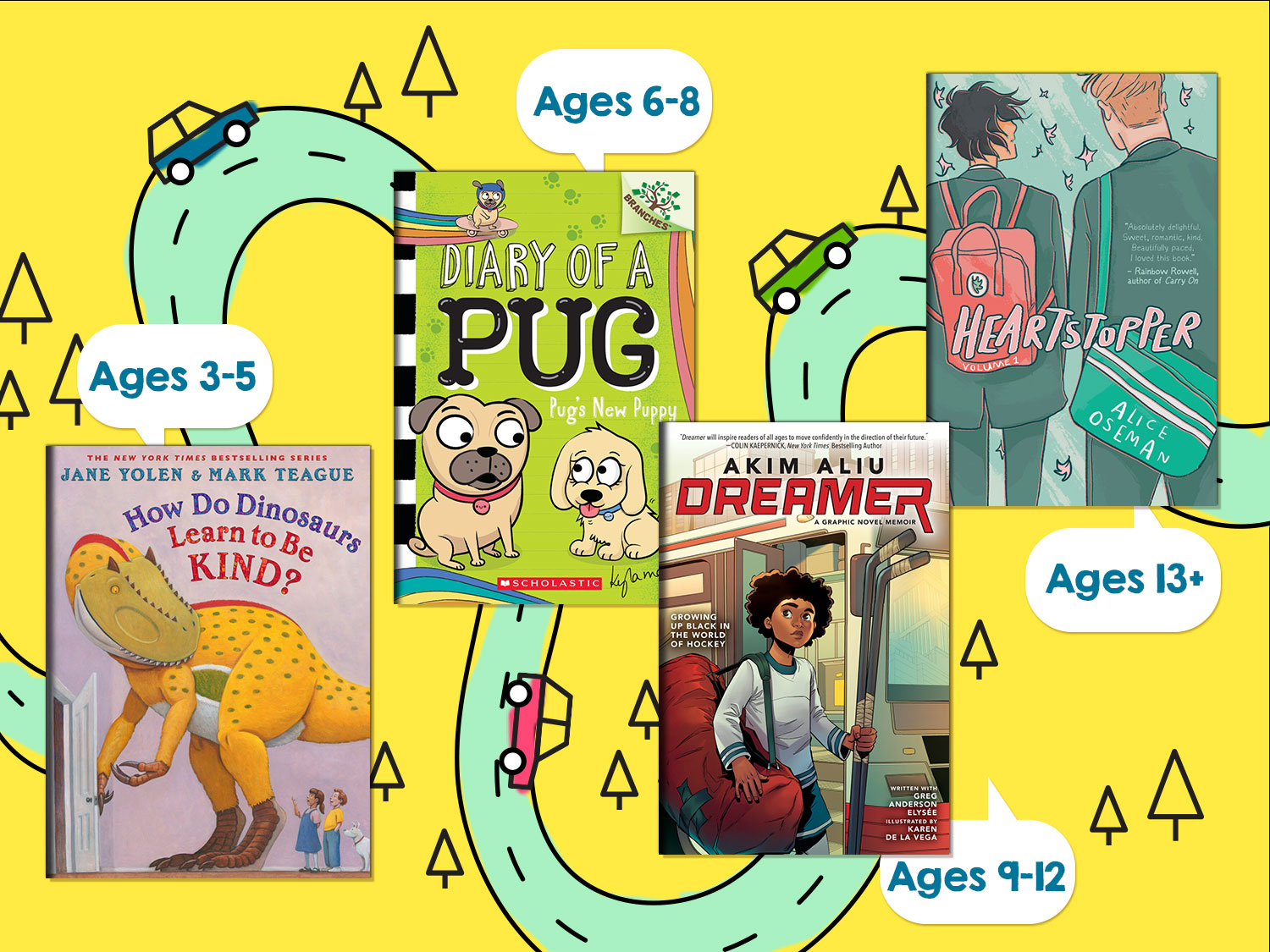Most parents with independent readers would agree that the day their kids started reading on their own, it was amazing — like a switch just flipped on! If you’re the parent of a preschooler or an early reader, there’s plenty you can do to get that switch in the “on” position for your own child.
Of course, reading is a skill that develops at different times for each child. And even though it may seem to happen overnight, the ability to read usually comes to kids after years and years of “pre-reading.” Things like the instructions kids receive at school, how parents help with reading at home, and even a child’s own passion for learning can all play a part in how and when a child learns to read.
To help you make sure your child is on the right path, here is a general roadmap of literacy skills by age and what to expect on the path to reading. Every child and school is unique, but after reading this, you’ll understand general landmarks to look for, and gain some useful tips on how to help instill a lifelong love of literacy in your child.
Want more book and reading ideas? Sign up for our Scholastic Parents newsletter.
Ages 3 to 5: Playful Pre-Readers
Skills They’re Working On
At this stage, kids are typically working on recognizing each letter in the alphabet, and their corresponding sounds. With their developing motor skills, it’s common for kids at this age to have trouble forming word sounds like “f”, “r”, “s”, and “th.” (Here's everything you need to know about language and literacy development in preschoolers.)
What They’re Learning in School
A major skill that needs to be established at this age is phonemic awareness, says Andrew DiNapoli, director of curriculum at the Baldwin School District in Long Island, New York. “With phonemic awareness, you’re not using any print,” he says. “You’re asking students to make a connection between sounds and letters.” This might involve asking students what sounds they hear in the word “big” without them seeing the word, or clapping out syllables in a longer word.
Each classroom is different, but preschool teachers will generally work on this and other pre-reading skills such as repeating rhyming words, using flashcards to recognize sight words, and of course, plenty of reading aloud to kids.
How You Can Support Them at Home
There are plenty of fun and easy ways to help your child continue to grow these skills:
Work on rhyming skills by pointing out everyday objects and asking your child to name a word that rhymes with them. For inspiration and practice, check out BOB Books: Rhyming Words.
Cultivate a love of reading early on with a hilarious box set like Laugh-A-Lot Phonics: Short Vowels Parent Pack or Scholastic Early Learners: Animal Antics — which come with funny stories, motivating stickers, and more. Before you know it, your kids will be begging to read (after all, they'll be eager to collect those reward stickers)! The First Little Readers Guided Reading Pack will also help your child develop key skills before heading off to kindergarten.
Continue practicing important pre-reading skills by talking to your child throughout the day. “That might include picking up a box of cereal in the store and saying, ‘Do I want this box or this other box?’” says DiNapoli. “It may seem silly stating obvious things, but the amount of vocabulary a child is exposed to from an auditory standpoint really affects the vocabulary they build.”
Help them find books with characters they love and relate to in order to make everyday reading practice more fun. Try Scholastic Level 1 readers such as Fancy Nancy: A Fancy Reading Collection (I Can Read Level 1) or Scholastic Reader Level 1: Noodles: I Love School!, starring the fluffy and adorable dog Noodles. You might even try the delightful rhyming story in Scholastic Reader Level 1: Silly Milly!




